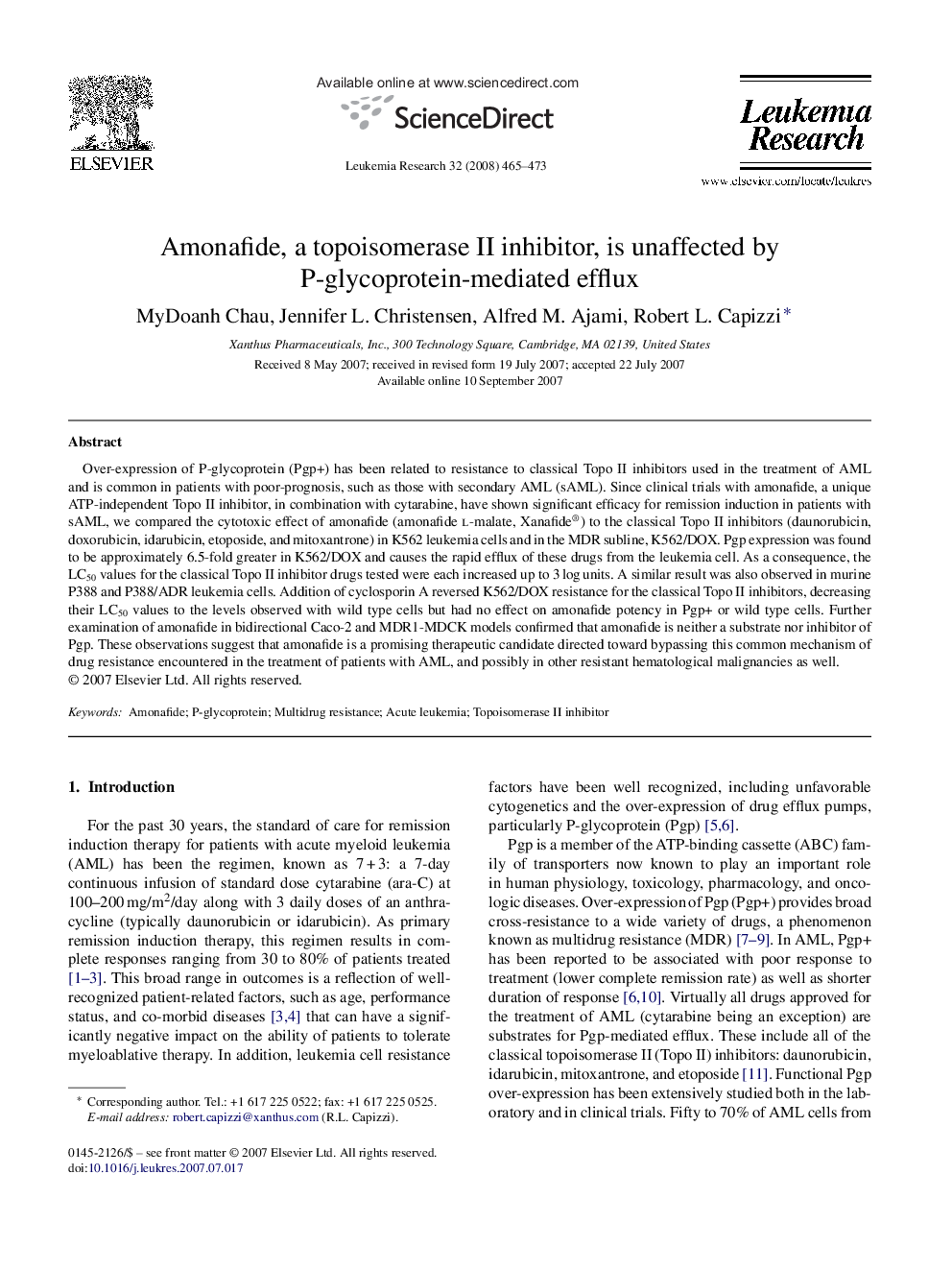| Article ID | Journal | Published Year | Pages | File Type |
|---|---|---|---|---|
| 2139720 | Leukemia Research | 2008 | 9 Pages |
Over-expression of P-glycoprotein (Pgp+) has been related to resistance to classical Topo II inhibitors used in the treatment of AML and is common in patients with poor-prognosis, such as those with secondary AML (sAML). Since clinical trials with amonafide, a unique ATP-independent Topo II inhibitor, in combination with cytarabine, have shown significant efficacy for remission induction in patients with sAML, we compared the cytotoxic effect of amonafide (amonafide l-malate, Xanafide®) to the classical Topo II inhibitors (daunorubicin, doxorubicin, idarubicin, etoposide, and mitoxantrone) in K562 leukemia cells and in the MDR subline, K562/DOX. Pgp expression was found to be approximately 6.5-fold greater in K562/DOX and causes the rapid efflux of these drugs from the leukemia cell. As a consequence, the LC50 values for the classical Topo II inhibitor drugs tested were each increased up to 3 log units. A similar result was also observed in murine P388 and P388/ADR leukemia cells. Addition of cyclosporin A reversed K562/DOX resistance for the classical Topo II inhibitors, decreasing their LC50 values to the levels observed with wild type cells but had no effect on amonafide potency in Pgp+ or wild type cells. Further examination of amonafide in bidirectional Caco-2 and MDR1-MDCK models confirmed that amonafide is neither a substrate nor inhibitor of Pgp. These observations suggest that amonafide is a promising therapeutic candidate directed toward bypassing this common mechanism of drug resistance encountered in the treatment of patients with AML, and possibly in other resistant hematological malignancies as well.
